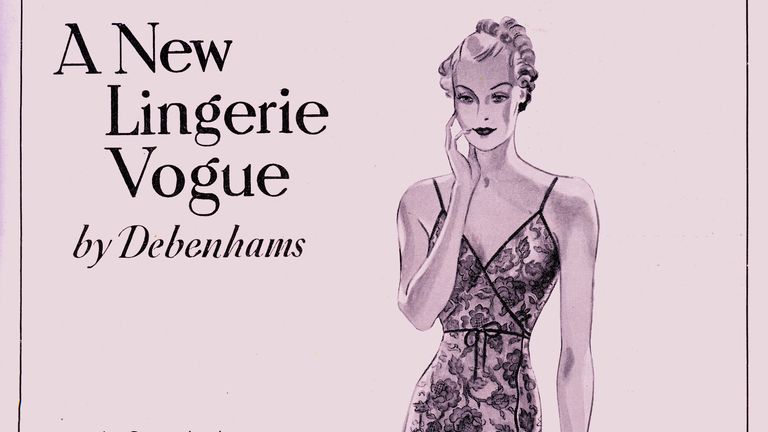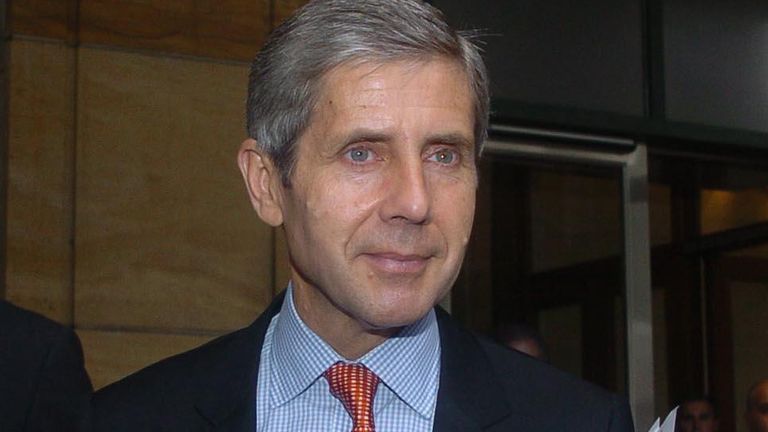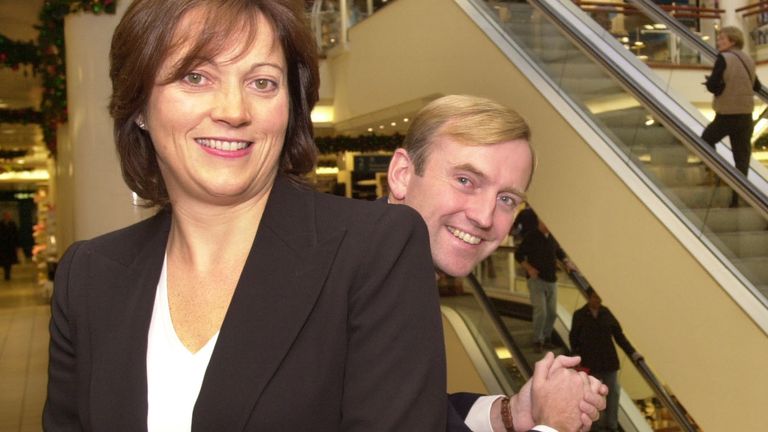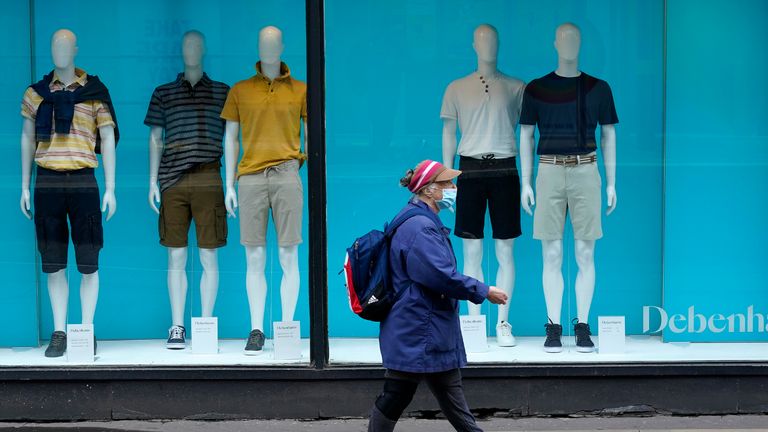Takeovers, scandal and debt - the colourful decades that ended in Debenhams' downfall
Family-owned for the first 150 years of its life, the doomed department store chain has been through a turbulent recent history.
Tuesday 1 December 2020 17:57, UK
COVID-19 has proved to be the final nail in the coffin for Debenhams.
But the seeds of destruction of this much-loved business were sowed many years ago.
Debs, which traces its origins back to a draper's shop that opened in London's West End in 1778 and which was subsequently rechristened following an investment from William Debenham in 1813, was family-owned for the first 150 years of its life.
It floated on the stock market in 1928 and continued to trade profitably thereafter.
Enter Sir Ralph Halpern, chief executive of the Burton Group, one of the UK's biggest retailers and the business which, ironically, now makes up the bulk of Sir Philip Green's crashed Arcadia empire.
Sir Ralph, one of the most colourful business figures of recent times, teamed up with Sir Terence Conran's Habitat-Mothercare business to launch a takeover bid for Debs in May 1985.
A fierce battle ensued in which rival House of Fraser, then owned by the controversial brothers Mohamed and Ali Al Fayed, sought to scupper the deal.
Sir Ralph eventually triumphed with a £566m takeover and Debs became part of Burton Group at the end of 1985.
The takeover, later investigated by the Department for Trade and Industry, was not a success - with the fortunes of the enlarged Burton Group taking a turn for the worse for a couple of reasons.
In late 1986, the lavish salaries being paid to Burton's senior managers began to attract adverse comment from shareholders, in particular the £1m paid to Sir Ralph - now commonplace in boardrooms but, in those days, a vast sum of money.
Then, in January 1987, the News of the World revealed that Sir Ralph, who was 48 at the time, had been having an affair with a 19-year old model named Fiona Wright.
Her racy revelations about his prowess in the bedroom, which led him to be called the "five times a knight", catapulted him from the business pages to the front pages.
Both developments rattled Sir Ralph's confidence and irritated investors.
Worse followed.
Sir Ralph launched a £200m programme - expensive even then - to refurbish Debenhams stores.
It took time to pay off and, when values in the retail property market began to fall in 1988, Burton found itself saddled with too much debt.
Sir Ralph was shown the door in November 1990 and Burton was left scrambling to reduce its borrowings.
Harvey Nichols, part of Debenhams since 1919, was sold to Dickson Poon, a Hong Kong businessman, for £60m in 1991.
In the years that followed, a new management team including Stuart Rose - later to become chairman and chief executive of Marks & Spencer - restored Burton's fortunes, with Debenhams becoming the most profitable part of the business thanks to initiatives such as its 'Designers at Debenhams' concept.
It was therefore a surprise when, in 1997, Burton announced it was demerging Debenhams.
John Hoerner, the American retailer recruited by Sir Ralph to run Debenhams but who was by now running the enlarged Burton, opted to stay with the latter.
Burton was renamed Arcadia and retained concessions in Debenhams outlets - a decision that, 23 years on, has left the fortunes of the two businesses intertwined.
As a stand-alone business, under Terry Green, the newly-demerged Debenhams announced big expansion plans and opened more than a dozen new stores.
But only two years later, Mr Green rocked Debs by quitting to join BHS, which had just been bought by his namesake - not relative - Philip Green.
He was replaced by Belinda Earl, who had been a 'Saturday girl' at her local Debenhams in Plymouth as a teenager, under whom the business flourished.
The private equity industry noticed.
Ms Earl and her finance director, Matthew Roberts, controversially helped buyout firm Permira launch a £1.54bn takeover bid in July 2003.
They ended up being outbid later that year by Baroness Retail, a rival consortium formed by CVC Capital, Texas Pacific Group and Merrill Lynch Global Private Equity, which eventually triumphed with a £1.7bn knock-out.
Out went Ms Earl and in came a team of executives who had previously made their name with a turnaround of the Homebase do-it-yourself chain.
Shortly afterwards, the team raised money against its property assets, before in February 2005 they raised £450m from a sale and leaseback deal involving all of Debenhams freehold properties including its flagship store on London's Oxford Street.
It meant that, along with other measures such as cutting capital expenditure and squeezing suppliers, the new owners of Debenhams more than trebled their investment in less than three years.
Only, as it turned out, at the expense of future growth and profits.
The sale-and-leaseback deals saddled Debs with expensive overheads and store leases stretching 30 years into the future just as shoppers were increasingly moving online.
When Debs returned to the stock market in May 2006, with a valuation of £1.675bn, it was a much-denuded business from the one taken private three years earlier.
Various chief executives, firstly the long-serving Michael Sharp and then the former Amazon fashion chief Sergio Bucher, tried in vain to restore the business against these tough headwinds but onerous store leases and interest payments on its debts absorbed most of the profits and deprived Debenhams of working capital.
The former chairman, Sir Ian Cheshire, told Sky News today that there were a core of around 70 stores and a very good website that could attract interest.
To that end, it is perfectly possible that the name of Debenhams - which numbered Queen Victoria among its customers - could yet live on.
But it is tempting to speculate that, were it not for its recent history and various changes of ownership, Debs would not find itself in its current predicament.
And 13,000 employees would not be staring at redundancy just weeks before Christmas.









